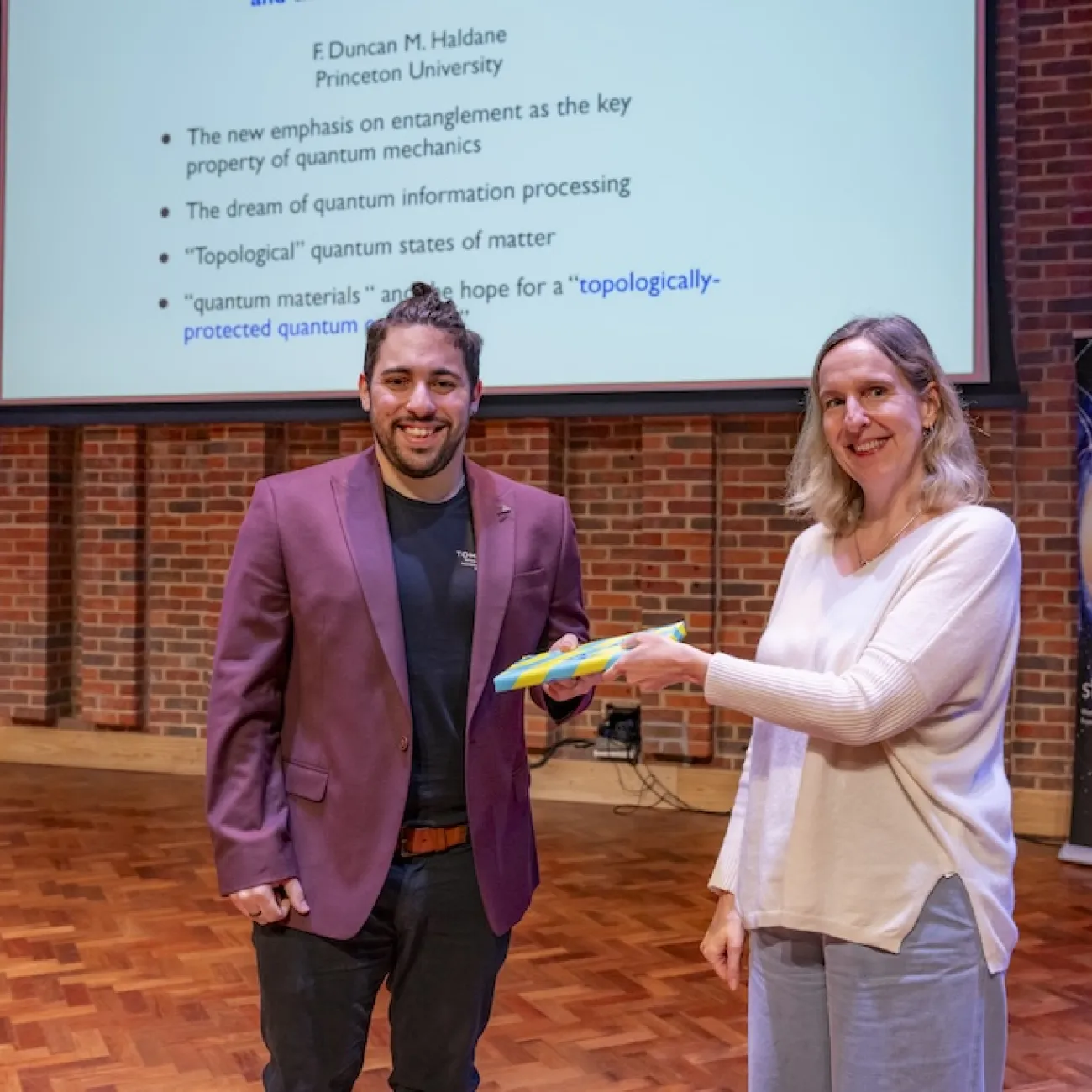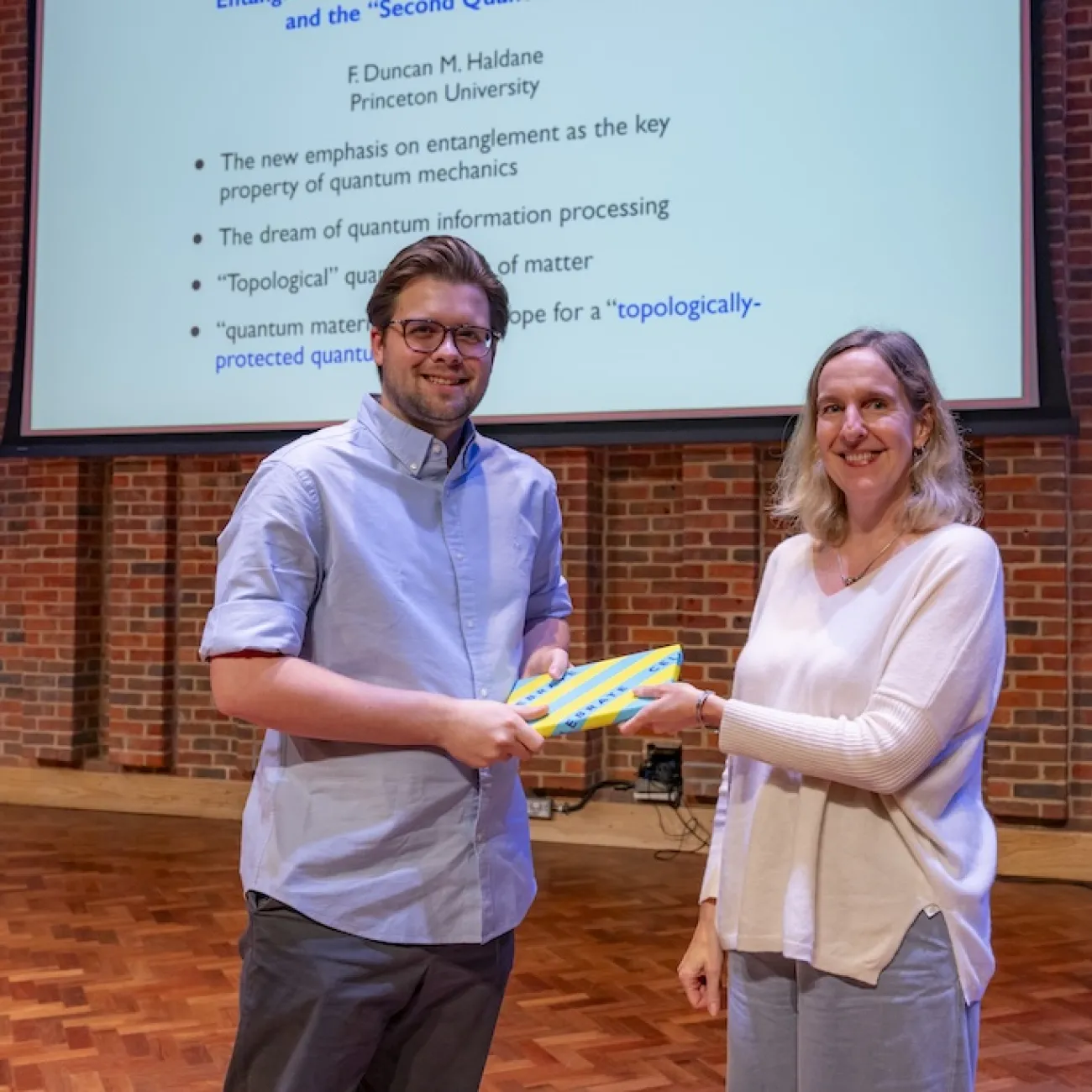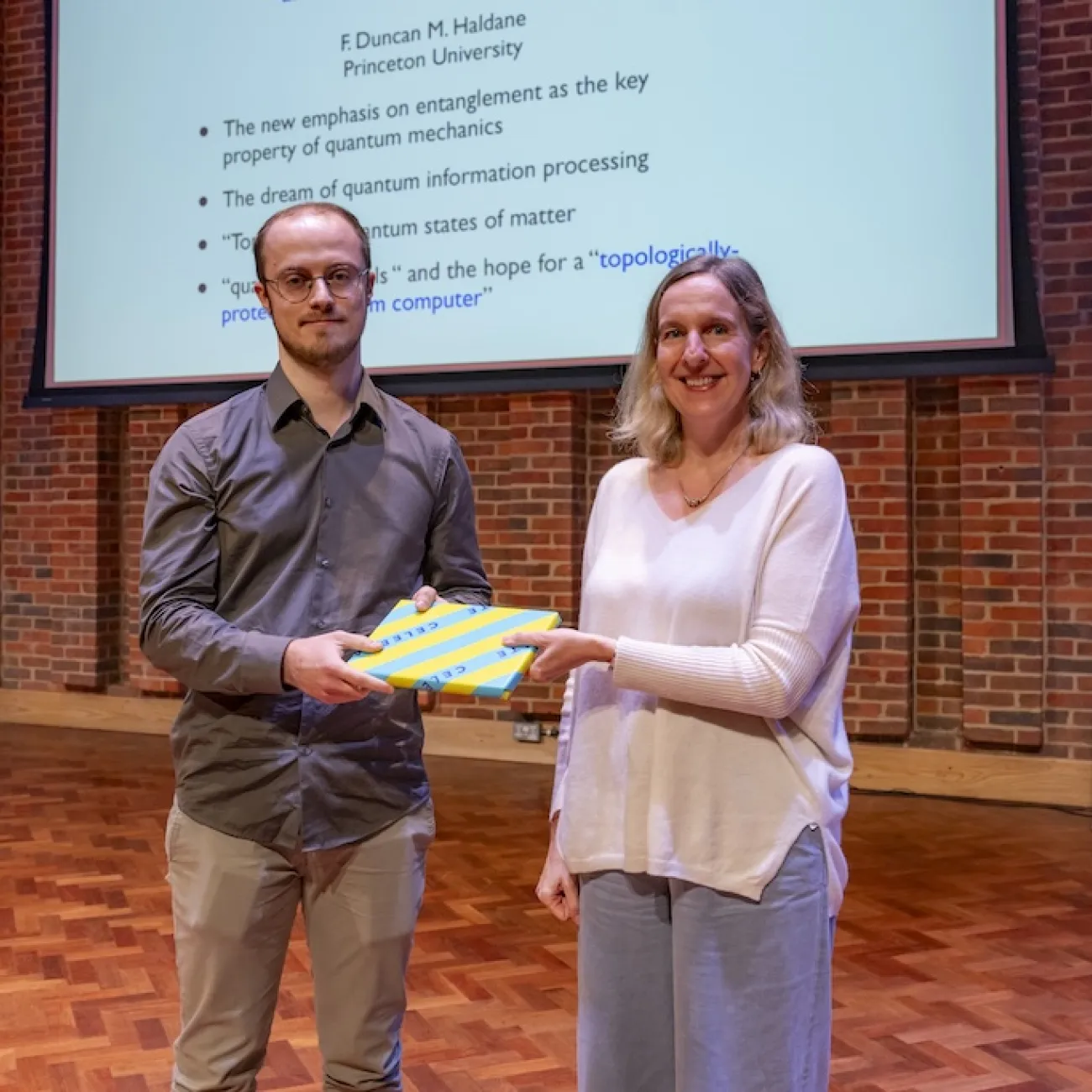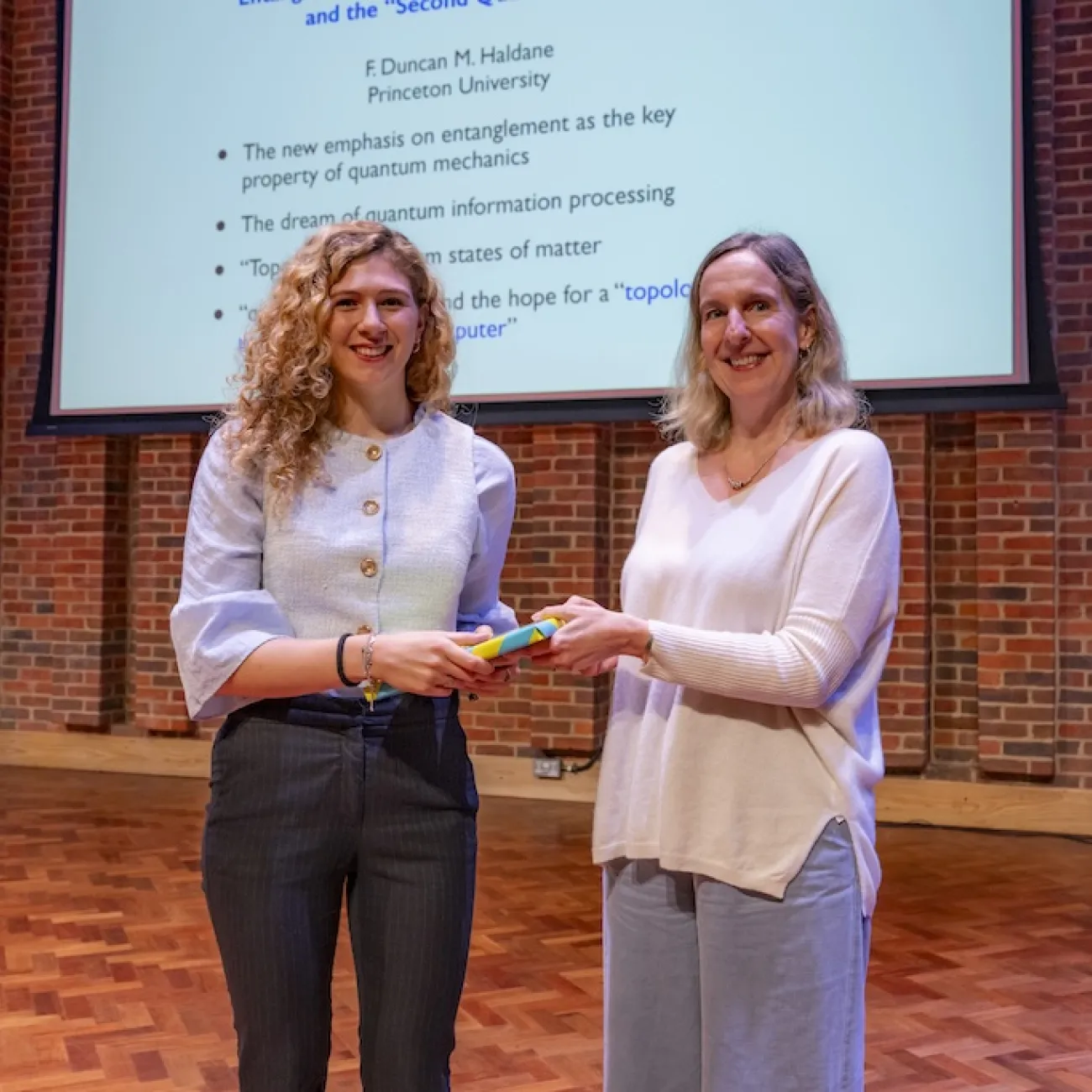2025 winners
Best publication in high-energy physics: Orestis Papadopoulos
For his paper “Softening Holographic Nuclear Matter”.
Neutron stars consist of dense nuclear matter, which is extremely difficult to model using traditional quantum field theory methods. Orestis’ work uses the AdS/CFT duality as an alternative approach to describe this complicated phase of matter. Orestis’ most recent paper establishes a holographic model that is more realistic than previous studies. It lays the ground for improved predictions from holography for dense nuclear matter at strong coupling, such as neutron stars.

Best publication in Astrophysics: Austen Wallis
For his paper “A Diagnostic Kit for Optical Emission Lines Shaped by Accretion Disc Winds”.
Austen is the lead author on this paper, which addresses the properties of the optical emission lines generated by gas winds outflowing from accreting compact binary systems. These signals are widely used as a diagnostic of the geometry of these astrophysical systems. Austen used a sophisticated Monte Carlo code to produce a grid of simulated data for a large set of parameters. He also made this dataset publicly available, which will serve as a valuable resource for other researchers, allowing them to improve their diagnostics of the geometries of binary systems.

Best publication in Gravitational Physics: Javier Caballo
For his paper “Quasi-normal mode orthogonality relations for AdS black holes”.
Quasi-normal modes have received considerable attention in the study of black holes for decades. In Javier’s paper, orthogonality relations between quasi-normal modes for a large class of black holes in negatively curved spacetimes were discovered for the first time. This is a remarkable step forward for the subject: the work has impact for our understanding of perturbations of black holes and dual quantum theories via the AdS/CFT correspondence. It also provides new insight into astrophysical black holes.

Prize for Public Engagement: Martina Fusi
For her Youtube channel “Spin-Off: Dietro le Quinte Della Fisica”.
Martina has developed a YouTube channel in Italian language, dedicated to making physics accessible to a broad audience. The channel focuses on topics in particle physics and explains complex ideas in a tangible way, using graphical illustrations and animations. Through this project, Martina is reaching a growing community of viewers, with some videos receiving tens of thousands of views.
